Paving the Way
for Buses–
The Great GM Streetcar Conspiracy
Part I – The Villains
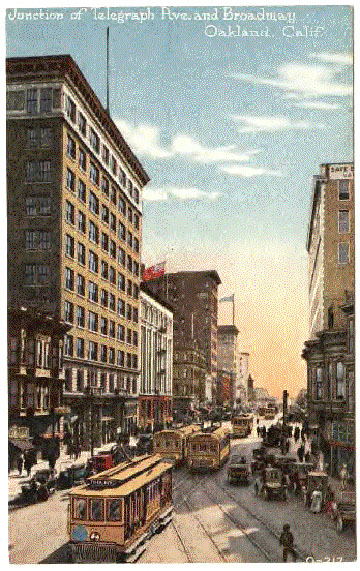 By
Guy Span
By
Guy Span
Almost everyone accepts that GM
plotted to buy up some transit companies and replace streetcars with
new GM buses. This is considered the "Great Transportation
Conspiracy" that finally ended up as a subplot in the cartoon
hit "Who Framed Roger Rabbit?" (and the main plot of a PBS
docu-fictional entitled "Taken For A Ride"). Did GM
actually buy electric traction companies and replace streetcars with
buses? You betcha. Was it an illegal conspiracy to destroy
streetcars? The United States government said no and acquitted the
participants on that charge.
So who were the real heroes and
villains in this story? One of the most recent villains is Bradford
C. Snell, a researcher whose delusions of paranoia seem nearly
limitless (at least in print). His 1974 report to the U.S.
government was entitled "American Ground Transport–A Proposal
for Restructuring the Automobile, Truck, Bus and Rail
Industries." In it, he says his report "… demonstrates
… General Motors to be a sovereign economic state whose common
control of auto, truck, bus and locomotive production was a major
factor in the displacement of rail and bus transportation with cars
and trucks."
 Snell’s
1974 report goes on to craft a plausible case for a vast conspiracy
to destroy clean, economic, and user-friendly streetcars with ugly,
smelly, and uneconomic buses so more people would buy cars. But
there’s more! He also finds GM guilty of building diesel
locomotives to eliminate electric freight railways and run up the
operating expenses so more railways would either go bankrupt or
raise their rates, thus benefiting the truckers (who would buy GM
trucks). Snell’s report also accuses GM of collaborating with the
Nazis during the war, defeating honest research into petroleum
alternatives such as steam, steam turbine, and electrics. In fact,
according to Snell, transportation in the modern 1970s was in such
bad shape and so lacking in alternatives because of the machinations
of GM.
Snell’s
1974 report goes on to craft a plausible case for a vast conspiracy
to destroy clean, economic, and user-friendly streetcars with ugly,
smelly, and uneconomic buses so more people would buy cars. But
there’s more! He also finds GM guilty of building diesel
locomotives to eliminate electric freight railways and run up the
operating expenses so more railways would either go bankrupt or
raise their rates, thus benefiting the truckers (who would buy GM
trucks). Snell’s report also accuses GM of collaborating with the
Nazis during the war, defeating honest research into petroleum
alternatives such as steam, steam turbine, and electrics. In fact,
according to Snell, transportation in the modern 1970s was in such
bad shape and so lacking in alternatives because of the machinations
of GM.
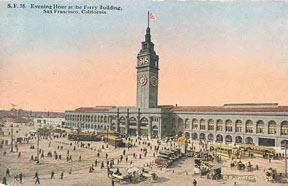 To
set this piece in its proper time frame, it is necessary to
understand that this was an era of oil shortages, big gas guzzling
cars, bankruptcy of nearly all the major northeastern railroads, the
takeover of long-distance rail passenger services by a
quasi-governmental agency (Amtrak in 1971), and a time when only
five cities in the country still retained streetcars. Snell set out
to connect all the dots with little regard for the facts. It was a
good story, so he told it and in turn did a major disservice to the
history of transportation in America.
To
set this piece in its proper time frame, it is necessary to
understand that this was an era of oil shortages, big gas guzzling
cars, bankruptcy of nearly all the major northeastern railroads, the
takeover of long-distance rail passenger services by a
quasi-governmental agency (Amtrak in 1971), and a time when only
five cities in the country still retained streetcars. Snell set out
to connect all the dots with little regard for the facts. It was a
good story, so he told it and in turn did a major disservice to the
history of transportation in America.
While the breadth of Snell’s
inaccuracies is too large to deal with here, it must be pointed out
that inside each there was usually a kernel of truth. Some were just
patently false. For instance: "The New Haven’s (railroad)
replacement of its electric locomotives with GM diesels
generatedhigher operating…expenses and substantial losses in
passenger and freight revenues. During 50 years of electrified
operation, it had never failed to show an operating profit."
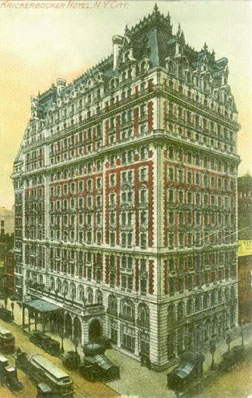 The
inconvenient facts: The New Haven was in bankruptcy from 1937 (the
last year it could afford to buy newly-built electric locomotives)
to 1947. By the time diesels rolled around, the New Haven used them
to replace older and less efficient steam engines. Contrary to Snell’s
implications, it retained electrification of its main line from New
Haven, CT, to New York City, and under New York City law, all its
passenger trains operated into the city using electricity. The New
Haven Railroad reentered bankruptcy in 1961, not because it bought
GM’s diesels, but because its franchise required operating lots of
money-losing commuter and passenger service.
The
inconvenient facts: The New Haven was in bankruptcy from 1937 (the
last year it could afford to buy newly-built electric locomotives)
to 1947. By the time diesels rolled around, the New Haven used them
to replace older and less efficient steam engines. Contrary to Snell’s
implications, it retained electrification of its main line from New
Haven, CT, to New York City, and under New York City law, all its
passenger trains operated into the city using electricity. The New
Haven Railroad reentered bankruptcy in 1961, not because it bought
GM’s diesels, but because its franchise required operating lots of
money-losing commuter and passenger service.
So for Snell, the New Haven was a
microcosm of all railway profitability and the cause for it all was
GM using its traffic muscle to foist off GM diesels on railroads
that might have considered other alternatives. (Snell alleges
railroads were forced to buy the diesels or lose GM’s significant
freight business.) With railroads in trouble financially, they were
offering poorer service at higher rates making trucking more
successful. And the truckers would buy from GM. In Snell’s mind
(and no where else), it was all a plot.
The next worst piece of
revisionist history that Snell offers up is the motorization of New
York City streetcars. Like the New Haven story, we find a gram of
truth amid all the outrageously misleading claims. According to
Snell, GM’s ownership of New York Omnibus in 1926 paved the way
for the elimination of the surface transit lines. According to
Snell, "At that time, as a result of stock and management
interlocks, GM was able to exert substantial influence over (New
York) Omnibus. John A. Ritchie, for example, served as chairman of
GM’s bus division and president of Omnibus from 1926 to well after
motorization was completed."
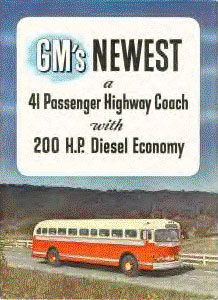 This
is all true. But what did it have to do with the "busstitution"
of New York’s transit lines? As it turns out, nothing. GM was
simply moving in on a situation where it could sell some buses. The
real villain of this piece was a Tammany Hall hack mayor, John F.
Hylan, supported by the Hearst Papers. William Randolph Hearst had
been supporting a populist campaign against the so-called
"Traction Trusts" for years and his crony was probably
just following orders. According to Zachary Schrag, author of
"The Bus is Young and Honest," Hylan had been fired from
the Kings County Elevated in 1897 (for studying law on the job) and
had his own personal animosity toward the transit companies.
This
is all true. But what did it have to do with the "busstitution"
of New York’s transit lines? As it turns out, nothing. GM was
simply moving in on a situation where it could sell some buses. The
real villain of this piece was a Tammany Hall hack mayor, John F.
Hylan, supported by the Hearst Papers. William Randolph Hearst had
been supporting a populist campaign against the so-called
"Traction Trusts" for years and his crony was probably
just following orders. According to Zachary Schrag, author of
"The Bus is Young and Honest," Hylan had been fired from
the Kings County Elevated in 1897 (for studying law on the job) and
had his own personal animosity toward the transit companies.
At that time, there were a number
of independent transit companies operating on the surface streets.
By the 1920s, they all had one thing in common–a five-cent fare
that didn’t pay the bills and the lingering public animosity
stirred up by the Hearst paper. And the bills were extraordinary. In
a scene soon to be repeated across America, these lines were
struggling to pay special franchise taxes, pay for their own snow
removal, and pay to repave the street to eight feet outside their
tracks–all legacies of the horse car days.
Any appeal to Mayor Hylan was
rebuffed. Bankruptcy and receivership didn’t help. In 1923,
Gerhard Dahl, president of the reorganized B.M.T., published
"Transit Truths" to gain some public sympathy. Dahl’s
words serve to highlight the relationship between transit and Hylan:
" … the B.M.T. has met with the bitter, personal and unfair
opposition of Mayor Hylan." And from a letter to Hylan:
"For seven years, you have been misleading and fooling the
people in this community… For seven years, you have blocked every
effort at transit relief. You, and only you, are to blame for the
present…deplorable condition of the whole transit situation. You
have used the transit situation as a political escalator. You have
been willing to sacrifice the comfort, the convenience and even the
necessities of the people of this community to your selfish
political interests. You are persisting in that course."
Unfortunately, this broadside changed nothing.
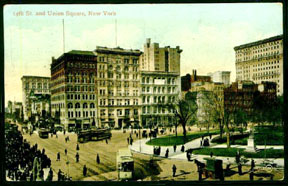 Finally
in 1924, New York Railways gave up and offered to rip up some 46
miles of tracks and substitute busses. NYR was hoping to avoid
upcoming paving costs and perhaps get around the 25-year-old nickel
fare. Hylan made them eat crow and admit that buses were superior to
electric traction. After that, it was just a question of when the
buses would arrive.
Finally
in 1924, New York Railways gave up and offered to rip up some 46
miles of tracks and substitute busses. NYR was hoping to avoid
upcoming paving costs and perhaps get around the 25-year-old nickel
fare. Hylan made them eat crow and admit that buses were superior to
electric traction. After that, it was just a question of when the
buses would arrive.
Note that this all occurred years
before GM had any involvement in New York City. So when GM arrived
on the scene, a political battle had been fought and lost by
electric traction. Since New York was the most modern city in
America, this one change would help create the mindset that
streetcars and rapid transit were old and inefficient. Certainly GM
worked assiduously to support the concept that buses were
"modern" and in particular, to control three of the five
independent operating companies. In turn, this control would be used
to influence the type of buses purchased.
Snell’s report completely misses
a critical juncture in history. Rather than dreaming up a scheme to
replace traction with buses, GM was introduced to such a concept by
the arch villains Hylan and Hearst. As a result, by 1933, the first
Manhattan line was converted to buses and except for the Third
Avenue Railway (which hung on until 1946) the last was converted in
1936. New York City finally achieved its "modern" buses
and despite the efforts of the electric traction industry, the rest
of the country would soon follow suit.
Snell’s report can also be
misleading (apparently intentionally so). Snell says, "In 1940,
GM, Standard Oil and Firestone assumed an active control in Pacific
(City Lines)… That year, PCL began to acquire and scrap portions
of the $100 million Pacific Electric System (of Roger Rabbit
fame)." This statement implies that PCL was getting control of
Pacific Electric, when in reality, all they did was acquire the
local streetcar systems of Pacific Electric in Glendale and Pasadena
and then convert them to buses. Many superficial readers jump on
this statement as proof that GM moved in the Red Cars of the Pacific
Electric. The ugly little fact is that PCL never acquired Pacific
Electric (it was owned by Southern Pacific Railroad until 1953).
Thanks to the Snell report, we now
have the makings of a good controversy. Many researchers blindly
quote Snell, passing his paranoid, incorrect, and misleading
research off as fact. Penny Mintz, who as a student wrote an article
for the New York University Environmental Law Journal (1994), fell
into this trap and quoted Bradford C. Snell nine times. On the Web,
one can find seventeen papers accusing GM of conspiracy based upon
Snell’s mendacious imaginings (not including one in Polish and
another in French). Interestingly enough, four papers ignore Snell
and use other evidence to point to a conspiracy, most notably an
excellent article by Al Mankoff. Five others take Snell to task and
prove there was no conspiracy, including Professor George Hilton’s
thoughtful article in Transportation Quarterly 51, No.3. The Snell
report is even the basis for the PBS movie "Taken For A
Ride," which does indeed live up to its title.
Competent scholars are outraged at
the abuses in Snell’s report and are happy to expose its nature.
Once arguing against Snell, they find themselves firmly in the
non-conspiracy camp. Pro-conspiracy theorists rely on Snell and look
like idiots. Thus it appears as if Snell’s work is more effective
at polarizing opinions (generating heat) than it is in adding any
light. If someone wants a real conspiracy theory, how about Bradford
Snell in the pay of GM to make up preposterous stories so a real
conspiracy would be overlooked?
(Part II will look at what GM actually
accomplished with National City Lines (and others), examine the
handicaps of streetcars, and introduce you to one of the heroes in
this story–E. Jay Quinby.)